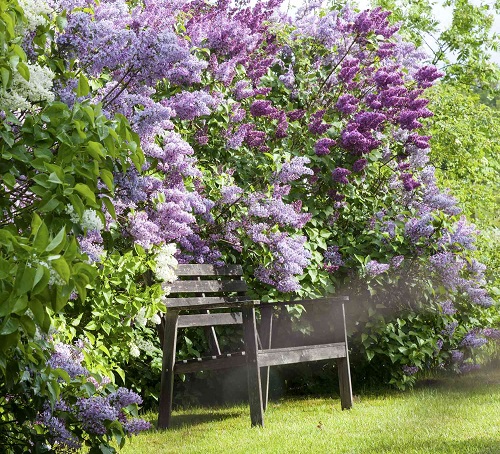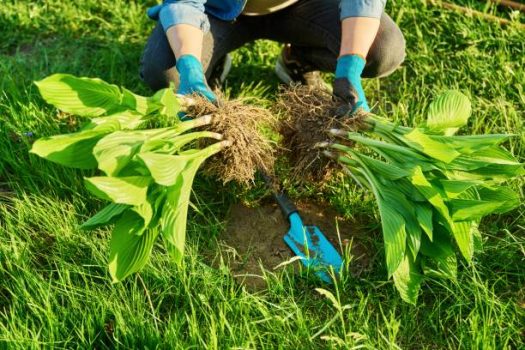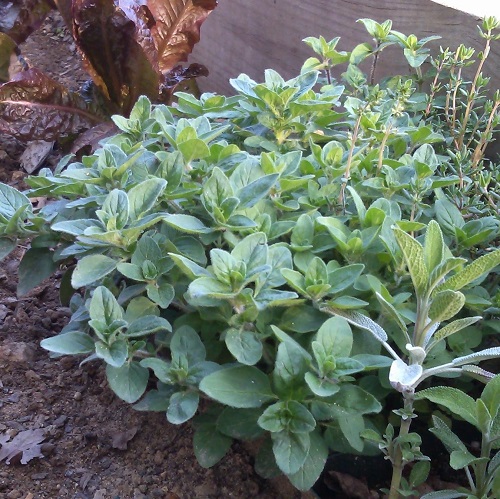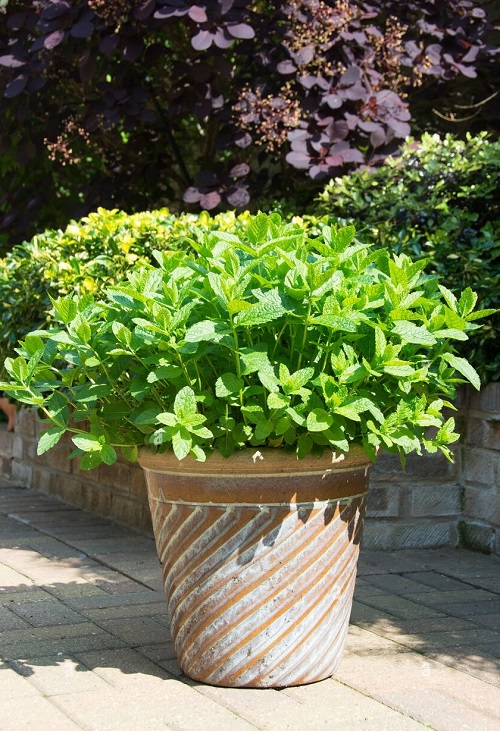Discover the top Plants to Divide in the Fall for a more restorative and robust garden. Learn expert tips and techniques to multiply them!
Dividing plants not only rejuvenates the selected green specimens but also offers an economical way to expand your garden’s beauty. Read on to discover the best Plants to Divide in Fall and take advantage of this season.
Look at the plants to grow from cuttings in fall here
Why Fall is Suitable for Dividing Certain Plants
1. Dividing in the fall is profitable because it allows the plants to focus on root development before winter, ensuring they are well-established for a healthy and vigorous spring growth season.
2. The combination of mild temperatures, increased moisture, and plant dormancy makes it an ideal time for this horticultural practice.
3. Cooler temperatures typically result in fewer pests, which can enhance the survival chances of new divisions.
Here are the fall houseplants to decorate your home
Best Plants to Divide in Fall
Woody Shrubs and Vines
1. Forsythia
Botanical Name: Forsythia suspensa
Forsythia, known for its brilliant yellow blooms, can be propagated through both division and cuttings in the fall. The process involves splitting mature plants to create new ones, ensuring a fresh burst of spring color year after year.
Planting Process:
- Carefully take out a mature Forsythia plant in the early or mid-fall.
- Use a knife to divide the root ball into sections; ensure each contains several stems and roots.
- Plant these divisions at the same depth they were before.
- Water generously after replanting to help them establish.
Why It’s Best in Fall:
“Natural Chill Pill”
Forsythia thinks it’s the star of spring with its sunny blooms, but little does it know fall is when it really shines. The moderate temps are like a “natural chill pill 🧘🏿,” letting this plant focus on root growth without sweating about blooms.
Discover best fall flowers and plants here
2. Lilac
Botanical Name: Syringa spp.
Lilacs, famous for their fragrant blossoms, can be divided in the fall. This propagation method helps maintain healthy lilac stands and provides an opportunity to expand your lilac collection.
Planting Process:
- In early autumn, dig up a not-so-big lilac bush. Because a bigger and more mature lilac plant is usually difficult to divide.
- Carefully divide the root clumps into sections.
- Plant these divisions in a sunny location at the same depth as before.
- Ensure they receive ample water after replanting.
Why It’s Best in Fall:
“The Social Distancer”
Lilac blooms are the life of the spring party, but come fall, this introverted plant is all about “me time.” The cooler weather lets it work on root development without any social obligations, ensuring a show-stopping performance next spring.
25 Beautiful Types of Lilac Flowers
Using Suckers and Root Shoots
If you have a large plant in the garden, it would be impossible for you to take it out and divide the roots. In that case, you should use its suckers and root shoots to divide the plant.
- Suckers are young shoots that emerge from the base of the lilac plant, usually around its root system. Gently dig around the sucker to expose the connecting roots to the parent plant. Cut the sucker away, making sure it has some roots attached. Immediately transplant the removed sucker into a prepared hole in the ground or a pot with good-quality soil. Water thoroughly!
- Root shoots are similar to suckers but originate directly from the root system and may appear far from the parent plant. Locate a healthy root shoot and excavate the soil around it. Carefully sever the root shoot from the main root, ensuring you retain a portion of the root with the shoot. The same as suckers—plant immediately, water, and fertilize when new growth appears.
Here’s a nice YouTube video that will teach you more about this process!
3. Weigela
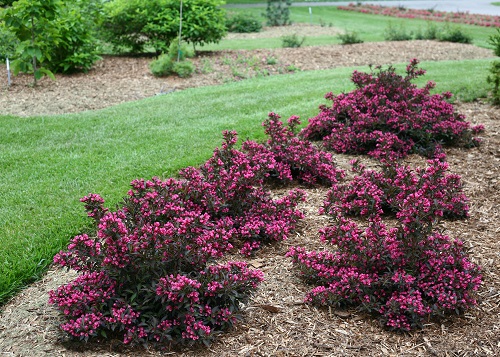
Botanical Name: Weigela florida
Weigela flowers are trumpet-shaped and vibrant, coming in various shades like pink, red, or white. They bloom in clusters during spring and summer, adding a burst of color to gardens and attracting pollinators.
Planting Process:
- Water it well a day before dividing.
- Use a shovel to unearth the plant, avoiding root damage.
- Use a sharp tool to split the root ball into sections.
- Plant divisions at the same depth in prepared raised beds or containers.
Why It’s Best in Fall:
“Root Bootcamp”
If Weigela had a gym membership, fall would be its personal trainer for root growth. No scalding heat or frozen soil to mess with its “workout routine.” Your Weigela will pump those roots like it’s leg day, every day.
Plants to Divide in Fall – Softwood Cuttings
4. Hosta
Botanical Name: Hosta spp.
Hostas are beloved for their lush foliage and shade tolerance. These perennial plants come in various leaf shapes and sizes, making them versatile additions to gardens. While they’re known for their foliage, they also produce lovely, often fragrant flowers in the summer.
25 Best Purple Hostas | Hostas with Purple Flowers and Leaves
Planting Process:
- Opt for a shaded or partially shaded area with well-drained soil.
- Dig a hole as deep as the hosta’s root ball and twice as wide.
- Place the hosta at the same depth as it was in its original container.
- Water immediately after planting and keep the soil consistently moist.
- Apply a layer of mulch to help retain moisture and suppress weeds.
Why It’s Best in Fall:
“The Recluse’s Dream”
Hostas are your garden’s silent friends; they love shady spots. Come fall, the reduced light and temperate climes are like a cozy blanket and a good book—optimal conditions for root development without any drama.
5. Daylilies

Botanical Name: Hemerocallis spp.
Daylilies are renowned for their colorful, trumpet-shaped flowers and adaptability to various soil conditions. These perennials are low-maintenance and can thrive in full sun to partial shade, making them a popular choice among gardeners.
Planting Process:
- Choose a spot with full sun to partial shade and well-drained soil for planting the divisions.
- Create a hole large enough to accommodate the root system.
- Place the daylily at the same depth it was in its container.
- Water generously after planting to settle the soil.
- Apply mulch around the plant to retain moisture, provide protection from cold, and prevent weeds.
72 Best Daylily Varieties | Top Daylily Types
Why It’s Best in Fall:
“Grounded Daydreams”
Daylilies in the fall are like teenagers who finally realize they have tasks to complete. The weather reminds them to stop daydreaming about blooming and get serious—by establishing a robust root system that’ll make next year’s blooms even dreamier.
6. Astilbe
Botanical Name: Astilbe spp.
Astilbes are renowned for their feathery, plume-like flower clusters that come in various colors. These perennials thrive in moist, shaded gardens and add elegance with their fern-like foliage. Their tolerance for shade makes them excellent choices for brightening up darker corners of your garden.
Planting Process:
- Opt for a shaded or partially shaded location with well-draining soil.
- Dig a hole slightly larger than the divided plant.
- Place the astilbe at the same depth it was in its previous container or in the ground.
- Water thoroughly after planting and maintain consistent soil moisture.
Check the list of perennial flowers that bloom from spring to fall
Why It’s Best in Fall:
“Moisture Maven”
Ah, Astilbe, the drama queen of moisture! Fall’s rainfall creates the perfect “moisture runway,” letting Astilbe strut its stuff underground for strong development without throwing any tantrums!
7. Iris
Botanical Name: Iris
Iris plants are known for their colorful, showy flowers shaped like a butterfly. They come in many bright hues and have long, slender leaves. They bloom in spring and early summer usually.
Planting Process:
- In early to mid fall until November, carefully dig up mature Iris rhizomes.
- Gently divide the rhizomes, ensuring each section has healthy roots.
- Plant the divisions just below the soil surface.
- Water lightly after planting; Iris prefers slightly dry conditions.
Why It’s Best in Fall:
“Bulb Spa Day”
Iris bulbs view fall as a spa day. With less energy spent on top growth, they can enjoy a nutrient-rich soak, luxuriating in the cool, moist soil like a mineral mud bath.
8. Peony
Botanical Name: Paeonia
Peony needs no introduction 😍; known for their big, fragrant flowers in colors like pink, red, and white, they are easy to grow perennials and add beauty to any yard!
Planting Process:
- In early autumn, dig up a mature Peony clump.
- Carefully separate the roots into sections with buds.
- Replant the divisions at a depth of 2 inches, with buds just beneath the soil surface.
- Water nicely after planting, ensuring the soil is not waterlogged.
35 Best Yellow Peony Varieties
Why It’s Best in Fall:
“Cold-Weather Cuddles”
Peonies just love the cold—kind of like that friend who enjoys winter camping. Fall’s chill invigorates their roots, basically giving them the equivalent of a cold shower to wake up and get growing.
9. Ornamental Grasses
Ornamental grasses bring a unique textural contrast to gardens, creating a dynamic backdrop against which other plants shine. Their long, wispy blades sway elegantly in the breeze, and some species produce striking feathery plumes.
Whether used as a border, filler, or focal point in containers, ornamental grasses add movement and grace to any landscape design.
You can divide them till in late summer and early fall, especially if you live in a moderately cool or warm climate.
Planting Process:
- Carefully dig around the base of the grass to lift up the root ball without causing much damage.
- Use a sharp, sterilized knife or spade to divide the root ball into smaller sections. Each section should have a good amount of roots and several blades of grass.
- Prepare the new planting holes with well-draining soil and compost.
- Place the divided sections into the desired areas or containers at the same depth they were previously growing.
- Water thoroughly immediately after planting and keep the soil moist for the first few weeks.
Why It’s Best in Fall:
“Bedhead Chic”
Your ornamental grass might look like it just rolled out of bed, but in fall, it’s really setting the stage for a fabulous ‘do. The cool season lets it focus on root strength, guaranteeing a stunning look next year.
10. Coral Bells

Botanical Name: Heuchera
Coral Bells offer a burst of color to shady spots in the garden, with its broad, vibrant foliage in hues ranging from burgundy to lime green and delicate flowers that hover above the leaves on slender stems. You can learn more about its best varieties here!
Planting Process:
- Dig around the Heuchera clump, taking care to lift the root system gently from the ground.
- Gently pull apart the root ball or cut it using a sharp, sterilized knife into multiple sections. Make sure each division has healthy roots and leaves.
- Enrich the planting holes with organic matter or compost for better water retention and nutrients.
- Plant the divisions into the prepared holes, ensuring they are at the same depth as before.
- Water the newly planted divisions generously and continue to keep the soil evenly moist.
32 Best Bell Shaped Flowers | Flowers that Look Like Bells
Why It’s Best in Fall:
“Subterranean Homebody”
Coral Bells treat fall like a Netflix binge session for roots. The season’s moderate temps are the perfect excuse to stay “indoors” (underground, that is), strengthening its root system for next year’s show.
Plants to Divide in Fall – Herbs
11. Chives
Botanical Name: Allium schoenoprasum
Chives are one of the most easy-growing and versatile herbs that can be multiplied easily by division. They add a mild onion flavor to recipes and make attractive herb garden additions.
Planting Process:
- Pick a location with well-draining soil and full sun to partial shade.
- Plant chive bulbs or divisions about 1 inch deep and 6 inches apart.
- Keep the soil consistently moist.
- Snip the leaves as needed for culinary use.
Learn growing chives indoors here
Why It’s Best in Fall:
“Flavorful Sabbatical”
Chives use fall to take a culinary sabbatical. While they’re not busy spicing up your dishes, the cooler weather is their study-abroad program for root development, making them even zestier next season.
12. Lemon Balm
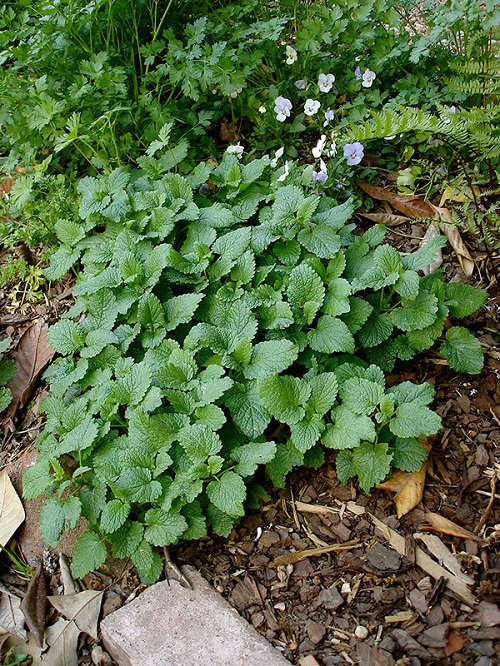
Botanical Name: Melissa officinalis
Lemon balm, with its vibrant green leaves and citrusy aroma, is a useful herb. It’s known for its culinary uses and aromatic qualities. This perennial herb is a favorite for teas, desserts, and even for its calming effects in herbal remedies.
Planting Process:
- Choose a sunny to partially shaded spot with well-draining soil.
- Plant lemon balm divisions at the same depth as their previous containers.
- Regularly trim the plant to encourage bushy growth.
Why It’s Best in Fall:
“Cool, Calm, Collected”
Just like it soothes your nerves in tea, Lemon Balm enjoys fall’s zen garden vibes for its roots. The plant can relax and focus on root fortification so that it comes back strong the coming year!
13. Oregano
Botanical Name: Origanum vulgare
Oregano, with its pungent aroma and savory flavor, is a staple herb in many cuisines. This hardy perennial herb features small, oval leaves and is prized for its culinary versatility. It’s also known for its ability to thrive in both garden beds and containers.
Planting Process:
- Take out the mother plant and divide it cleanly in different sections.
- Select a location with full sun and well-draining soil.
- Keep the soil moderately moist, but avoid waterlogged conditions.
- Regularly prune to encourage bushy growth and prevent legginess.
How to Grow Oregano in Pots | Oregano Plant Care
Why It’s Best in Fall:
“Deep Dive”
Think of fall as Oregano’s deep-sea exploration phase. With no scorching sun or harsh winters, it’s all about that deep-root action, diving down to get all the nutrients for a flavorful comeback!
14. Mint
Botanical Name: Mentha spp.
Mint is a versatile herb known for its refreshing, aromatic leaves. It comes in various varieties, including peppermint and spearmint, and many more, each with its distinct flavor. Mint is commonly used in beverages, desserts, and culinary dishes.
Planting Process:
- Select a site with partial to full sun and well-drained soil.
- In early fall, divide established mint plants into smaller sections, ensuring each section has roots and shoots.
- Plant the divisions at the same depth they were growing before.
- Mint grows vigorously, so consider planting it in a container to prevent it from spreading too aggressively.
11 Fragrant Mint Varieties for Herb Garden
Why It’s Best in Fall:
“The Explorer”
Mint is like the Indiana Jones of plants; it loves to spread. Fall is its treasure hunt season, the optimal time to explore the soil and spread those adventurous runners without battling heat waves.
15. Lavender
Botanical Name: Lavandula spp.
Lavender is one of the most popular herbs and a personal favorite of many in our editorial team; more specifically, our editor’s chamber is perfumed with its essential oil 😆 always. It’s important to note that the ideal time to divide lavender is spring, but if you do it in fall, do it early in the season so that the divided plants get enough time to establish roots before winter.
Planting Process:
- In early fall, divide established lavender plants into smaller clumps, ensuring each clump has roots and top growth.
- Plant the clumps at the same depth they were growing before.
- Water well after planting to help settle the soil.
- Trim back any excessive growth slightly to encourage bushier plants.
Lilac vs Lavender: All the Differences
Why It’s Best in Fall:
“The Grounded Guru”
Lavender in fall is your garden’s meditation guru. The season’s tranquility lets it focus on its inner self—or should we say inner roots? A more centered plant today means more flavorful scents tomorrow!
Look at the herbs that grow from division here
Plants to Divide in Fall – The Bottom Line
- Know the average first frost date in your area and aim to complete the division at least 4-6 weeks before this date. This gives the plants ample time to establish their roots.
- Only divide plants that are healthy. Signs of a good candidate include vigorous growth in the past season and no signs of disease. Generally, plants that are at least two to three years old are suitable for division.
- In the weeks following the division, make sure to water deeply to encourage roots to extend further into the soil.
- If an early frost is forecasted, consider providing protection by bringing your divided plants indoors if growing in a pot. Covering the newly divided plants with frost blankets overnight is a good idea.


